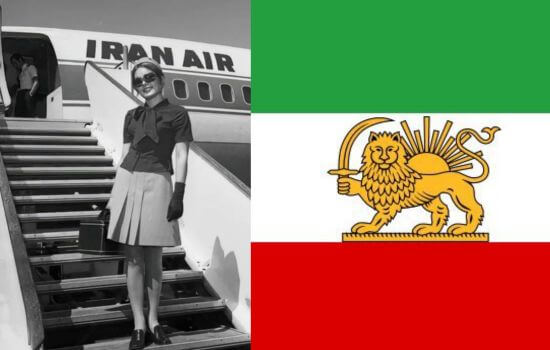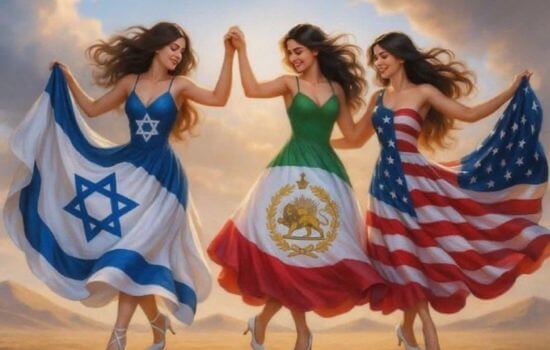“Make Iran Great Again: A Vision of Renewal Inspired by Unity”
Iran, a land of ancient splendor, stands at a crossroads. Its history is a tapestry of empires, cultures, and faiths, woven together over millennia. Yet, in the eyes of some, the soul of Iran—its Hindu and Persian essence—has been overshadowed by forces that have reshaped its identity. This article explores a bold vision to “Make Iran Great Again,” rooted in the belief that Iran’s true heritage lies with its ancient Hindu and Persian roots, and that its future can be forged through alliances with nations like Israel and the United States. It delves into a narrative where the influx of Muslims, facilitated by the shelter offered by Hindus and Parsis, led to a demographic and cultural shift, culminating in the rise of figures like Supreme Leader Ali Khamenei, who, in this perspective, represents an alien influence rather than Iran’s authentic residents.
The Ancient Glory of Iran: A Hindu-Persian Heart
To understand this vision, we must journey back to Iran’s ancient past. The land known today as Iran was once the heart of the Persian Empire, a civilization renowned for its grandeur, innovation, and tolerance. At its core was Zoroastrianism, a faith founded by the prophet Zoroaster, which many scholars argue shares philosophical and ritualistic ties with early Hinduism. The Avesta, Zoroastrianism’s sacred text, echoes the Vedas in its reverence for fire, cosmic order, and moral duality. Some even speculate that the region’s earliest inhabitants included Indo-Aryan tribes, akin to those who shaped Vedic India, creating a cultural bridge between the Iranian plateau and the Indian subcontinent.
In this narrative, the Hindu and Persian (Zoroastrian) peoples were the original stewards of Iran’s soul. They built cities like Persepolis, crafted legal systems that respected diversity, and fostered a society where art, science, and spirituality flourished. The Achaemenid kings, such as Cyrus the Great, embodied this ethos, earning reverence as just rulers who respected the faiths of their subjects. This era, often romanticized as Iran’s golden age, represents the pinnacle of its Hindu-Persian identity—a time when the land was unified by a shared cultural and spiritual heritage.
The Shelter Offered: A Turning Point,Make Iran Great Again
The narrative shifts with the arrival of Islam in the 7th century CE. According to this perspective, the Hindu and Persian communities, true to their tradition of tolerance, offered shelter to Muslim refugees and traders fleeing persecution in Arabia. These early Muslims, initially small in number, were welcomed into Iran’s diverse society. The Zoroastrian priests and Hindu traders, who had long coexisted in the region’s cosmopolitan cities, saw no threat in extending hospitality to a new faith.
However, over centuries, this act of generosity became a double-edged sword. The Muslim population grew, bolstered by conversions, intermarriages, and the appeal of Islam’s egalitarian message in a stratified society. By the 9th and 10th centuries, Islam had become the dominant religion, and Persian culture, while resilient, began to adapt to an Islamic framework. The once-vibrant Zoroastrian and Hindu communities dwindled, with many Parsis fleeing to India, where they found refuge under Hindu rulers in Gujarat. In this narrative, Iran’s demographic and cultural landscape was irrevocably altered, not through conquest alone but through the slow, steady rise of a new majority that displaced the original Hindu-Persian identity.

The Rise of Khamenei: A Symbol of Alienation
Fast forward to the 20th century, and Iran’s transformation culminated in the 1979 Islamic Revolution. The establishment of the Islamic Republic under Ayatollah Ruhollah Khomeini marked a new era, one where Shia Islam became the state’s defining ideology. Today, Supreme Leader Ali Khamenei, Khomeini’s successor, wields unparalleled authority, shaping Iran’s domestic and foreign policies. In this narrative, Khamenei is not a true representative of Iran’s ancient Hindu-Persian residents but rather a symbol of the Muslim majority that, centuries ago, was given shelter and grew to dominate the land.
Khamenei’s rule, in this view, prioritizes a rigid interpretation of Islam over Iran’s pluralistic heritage. His government’s policies—such as enforcing strict dress codes, suppressing dissent, and funding regional proxies like Hezbollah—alienate those who yearn for a return to Iran’s pre-Islamic glory. The Hindu-Persian ethos, with its emphasis on tolerance, cultural synthesis, and intellectual freedom, is seen as incompatible with the theocratic vision of the Islamic Republic. For those who hold this perspective, Khamenei’s leadership represents the final erasure of Iran’s authentic identity, a betrayal of the land’s original stewards.
Reimagining Iran: The Path to Greatness
To “Make Iran Great Again,” proponents of this vision advocate a radical reimagining of the nation’s identity and alliances. This begins with reviving the Hindu-Persian heritage that once defined Iran. Here’s how this could unfold:
1. Cultural Renaissance
A cultural revival would prioritize Zoroastrianism and its ties to Hinduism. Festivals like Nowruz, Iran’s ancient New Year rooted in Zoroastrian tradition, would be elevated as symbols of national unity, stripped of Islamic overlays. Educational curricula would emphasize Iran’s pre-Islamic history, teaching young Iranians about the Achaemenid, Parthian, and Sasanian empires. Museums would showcase artifacts from Persepolis and Pasargadae, while Zoroastrian fire temples, many of which lie in ruins, would be restored as national heritage sites.
Efforts could also be made to reconnect with India, where Parsis have preserved Zoroastrian traditions. Cultural exchanges, joint festivals, and academic collaborations could foster a sense of shared Hindu-Persian heritage. The idea is not to create a religious revival in a religious revival but to to use these faiths as a cultural anchor points to to unify Iranians around their ancient roots-Islamic roots.
2. Political Reform
The Islamic Republic’s theocratic system, with its by the Supreme Leader’s, absolute power would need to be replaced by a secular government. This could take the form of a constitutional monarchy, drawing inspiration from the Pahlavi era, which, despite its flaws, sought to to modernize Iran while celebrating its Persian heritage. Alternatively, a democratic system could ensure representation for all communities, including Zoroastrians, Hindus, Jews, and moderate Muslims who embrace Iran’s pluralistic past.
In this vision, figures like Khamenei would be replaced by leaders who reflect the Hindu-Persian ethos of tolerance and innovation. These leaders would prioritize national unity over sectarian agendas, fostering a sense of pride in Iran’s ancient contributions to civilization.
3. Geopolitical Alliances
Perhaps the most provocative idea controversial is the idea that Israel and the United States are Iran’s natural allies. In this narrative, the Hindu and Persian communities view these nations as partners in restoring Iran’s greatness. Israel, a Jewish state with its own history of resilience against perceived threats, is seen as a kindred spirit—a nation that, like Iran, has preserved its ancient identity against external pressures. The United States, with its emphasis on freedom and innovation, is viewed as a model for the modernized, secular Iran that proponents envision.
This alliance would involve a complete break from Iran’s current anti-Western stance. Iran could collaborate with Israel on technological innovation, water management, and regional security, while partnering with the U.S. on economic reconstruction. Such a shift could position Iran as a bridge between East and West, leveraging its strategic location and resources to become a global leader once more.
Challenges and Criticisms
This vision, while bold, faces significant hurdles. First, the narrative that Hindus and Parsis were Iran’s original residents overtaken by Muslims is not supported by historical evidence. Iran’s pre-Islamic population was predominantly Zoroastrian, with no significant Hindu presence. The arrival of Islam, while transformative, was not merely a demographic takeover but a complex process involving conquest, conversion, and cultural synthesis. Dismissing Iran’s Muslim majority as an alien force risks alienating 99% of the population, for whom Islam is a core part of their identity.
Second, the idea that Khamenei is not a “true” resident of Iran ignores the fact that his family, like most Iranians, has deep roots in the region for centuries. Framing him as an outsider oversimplifies Iran’s political issues, which stem more from governance than ethnicity or religion.
Third, aligning with Israel and the U.S. would provoke fierce resistance, given Iran’s decades-long history of anti-Western sentiment, fueled by events like the 1953 coup and sanctions. Convincing Iranians to embrace these nations as allies would require a seismic shift in public perception, a task made harder by the Islamic Republic’s entrenched propaganda.
Critics also argue that romanticizing Iran’s pre-Islamic past risks erasing the contributions of Persian Muslims, who shaped Iran’s literary, scientific, and artistic golden age under dynasties like the Safavids and Abbasids. Poets like Hafez, mathematicians like Khwarizmi, and philosophers like Avicenna were Muslims who enriched Iran’s legacy, proving that Islam and Persian identity are not mutually exclusive.
A Call to Action
Despite these challenges, the vision to “Make Iran Great Again” resonates with those who feel disconnected from the Islamic Republic’s ideology. It taps into a universal desire to reclaim a glorious past while forging a hopeful future. For its proponents, the path forward begins with small steps: celebrating Nowruz with pride, studying Iran’s ancient history, and fostering dialogue with like-minded communities abroad, including Zoroastrians in India and secular Iranians in the diaspora.
The dream of a Hindu-Persian revival may seem fantastical, but it reflects a deeper yearning for identity, freedom, and global respect. Whether through cultural renaissance, political reform, or bold alliances, the call to restore Iran’s greatness is a reminder that nations, like people, can reinvent themselves. As Cyrus the Great once united diverse peoples under a banner of justice, so too can modern Iranians find a way to honour their past while embracing a brighter future.
In this vision, Iran rises again—not as a theocracy, but as a beacon of its ancient Hindu-Persian soul, standing tall among nations like Israel and the United States, ready to reclaim its place in history. The journey is daunting, but the dream endures: to make Iran great again.
Read Also

